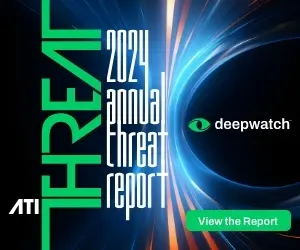
A WEP crack is the exploitation of vulnerabilities in the Wired Equivalent Privacy protocol to gain unauthorized access to Wi-Fi networks. Although the Wired Equivalent Privacy (WEP) protocol is obsolete, understanding how it’s compromised remains critical for risk assessments and securing legacy systems that may still be in use.
What is a WEP Crack and Why is the Wired Equivalent Privacy Protocol Vulnerable?
Wired Equivalent Privacy was the original security protocol for Wi-Fi networks, intended to provide confidentiality comparable to that of wired networks. Though now deprecated, understanding its technical shortcomings helps contextualize wireless risks and legacy system exposure in modern enterprise environments.
- Encryption and Key Management Design: WEP uses the RC4 stream cipher for encryption, combined with a 24-bit Initialization Vector (IV) appended to a shared secret key. This encryption creates a total key length of either 64 or 128 bits. However, the IV is transmitted in plaintext and reused frequently due to its small size, which significantly reduces the entropy of the key space. This reuse enables statistical attacks that can recover the WEP key after capturing a sufficient number of packets.
- Weak Integrity Protection: WEP implements data integrity through a 32-bit CRC-32 checksum, appended to each data packet. CRC-32 is not cryptographically secure and is vulnerable to bit-flipping attacks. Attackers can manipulate encrypted packets and recompute the checksum without knowing the key, making tampering undetectable by the protocol.
- Susceptibility to Packet Injection: Due to the lack of replay protection and the predictable nature of the Initialization Vector (IV), WEP is vulnerable to packet injection attacks. Tools can exploit this by injecting ARP requests and generating high volumes of traffic to accelerate IV collection, making key recovery feasible in minutes under typical conditions.
- Key Reuse and Brute Force Exposure: WEP relies on a single, manually configured static key shared across all clients and access points. This key does not change unless it is manually updated, thereby increasing the exposure window. Once compromised, the attacker gains full access to all communications on that network segment.
How WEP Cracks Are Executed
WEP cracks involve exploiting known weaknesses in the encryption and protocol implementation of WEP to recover the shared key and gain unauthorized access to a wireless network. Understanding how WEP is compromised remains critical for detecting threats and securing legacy infrastructure.
- Passive Capture of Initialization Vectors (IVs): The first step in a WEP crack is the passive monitoring of wireless traffic to collect data packets that contain initialization vectors (IVs). These IVs, which are broadcast in plaintext, are relatively short at 24 bits and often reused. By capturing enough packets, typically in the range of 40,000 to 100,000 for 64-bit WEP, attackers can build a dataset large enough to analyze statistical patterns and exploit known weaknesses in the RC4 key scheduling algorithm.
- Active Injection to Accelerate IV Collection: To expedite the attack, active techniques such as ARP request replay or packet injection are employed to generate additional traffic, thereby accelerating the process. By injecting spoofed packets into the network, attackers can force the access point to respond, rapidly increasing the rate of IV reuse. Tools like Aireplay-ng automate this process, allowing attackers to generate thousands of packets per second, significantly reducing the time required for a successful crack.
- Statistical Key Recovery Using Known Attacks: Once enough IVs are collected, statistical attacks such as the FMS (Fluhrer, Mantin, and Shamir) or KoreK attacks are applied. These methods exploit biases in the RC4 key scheduling algorithm to guess portions of the WEP key. The success of these attacks depends on the volume of captured data and the level of IV reuse. Tools like Aircrack-ng implement these algorithms and can recover WEP keys in a matter of minutes under typical conditions.
Why WEP Cracks Matter to Cybersecurity Operations
WEP cracks remain relevant to cybersecurity operations due to their potential exploitation in legacy systems and unmanaged wireless infrastructure. WEP’s presence in large enterprise environments can still present a critical attack vector if overlooked.
- Legacy System Risk in Complex Environments: Large organizations often maintain legacy devices for operational continuity or specialized industrial applications. These systems may still use WEP due to firmware limitations or lack of oversight. Attackers can exploit these weak points to gain lateral movement into internal networks, bypassing traditional perimeter defenses and exposing sensitive systems to compromise.
- Threat Actor Tactics and Adversary Simulation: WEP cracks are commonly used by penetration testers and adversaries alike due to their low cost and high success rate. Red teams often simulate WEP exploitation to demonstrate how attackers can breach environments with minimal effort. The tactic also appears in real-world APT playbooks when targeting supply chain partners or remote sites with outdated wireless controls, making it essential for threat intelligence teams to track and flag such activity.
- SOC Monitoring and Response Challenges: Detecting WEP cracking attempts in real time requires wireless intrusion detection systems (WIDS) capable of identifying replay attacks, high IV reuse, or abnormal traffic injection. However, many SOCs lack dedicated wireless monitoring capabilities or overlook wireless network telemetry in favor of endpoint and perimeter signals. This blind spot can delay detection and response, allowing attackers to remain undetected.
- Governance and Risk Management Implications: From a governance perspective, the existence of WEP-secured access points indicates gaps in configuration management, policy enforcement, and security baselining. CISOs and security architects must ensure that wireless audits are part of routine risk assessments and that any use of WEP is explicitly banned and actively remediated.
Operational Implications of WEP Cracks for Security Teams
The operational impact of WEP cracking extends beyond technical exploitation—it reflects gaps in visibility, configuration control, and incident preparedness. Security teams must address these risks with a proactive, structured response across detection, policy enforcement, and asset management.
Wireless Visibility and Asset Discovery: Security operations often prioritize endpoint, network, and cloud assets, but wireless infrastructure—especially legacy or shadow access points—may be excluded from routine asset discovery. Identifying WEP usage requires tools that can map the RF environment and fingerprint access points by protocol. Without this visibility, teams risk leaving attack paths open that circumvent traditional network segmentation or NAC enforcement.
Incident Detection and Response Readiness: WEP cracking techniques—such as ARP replay, high-volume IV collection, and injection—generate observable behaviors that can be detected and responded to. However, many SOCs lack tuned wireless intrusion detection systems (WIDS) or do not integrate wireless telemetry into their SIEM or XDR platforms. This limits detection and delays response. Playbooks should be updated to include wireless threat hunting procedures, and SOC analysts should be trained to correlate WEP-specific IOCs with broader network activity for effective containment.
Policy Enforcement and Configuration Auditing: Governance teams may assume that WEP is already deprecated, but policy gaps often exist between intended and actual enforcement. Technical controls should include automated checks within network management systems to alert on WEP configurations. Internal audits should verify that configuration management databases (CMDBs) accurately reflect wireless deployments and that security baselines explicitly prohibit the use of WEP.
Risk Communication to Executive Stakeholders: CISOs and security leadership must effectively communicate the business risks associated with WEP-related exposures in terms of regulatory compliance, operational continuity, and reputational impact. Framing the risk as a failure in control assurance—not just a technical flaw—helps secure executive buy-in for remediation efforts.
How Managed Security Services Help Minimize WEP Crack Risks
Managed Security Service Providers (MSSPs) play a critical role in mitigating risks associated with legacy vulnerabilities, such as WEP cracking. By delivering specialized monitoring, response, and compliance capabilities, MSSPs help enterprises identify and eliminate outdated wireless configurations that could serve as attack vectors.
- Continuous wireless infrastructure assessment: Managed Service Providers (MSSPs) regularly audit wireless environments for misconfigurations and outdated encryption standards. Using automated discovery tools and wireless intrusion detection systems (WIDS), they detect WEP-protected access points and generate prioritized remediation reports. These assessments help enterprise IT teams identify non-compliant network segments before they can be exploited.
- Real-time threat detection and alerting: MSSPs use integrated SIEM platforms to correlate wireless security data with broader network telemetry. When WEP-based activity or anomalous behavior is detected, such as unusual ARP requests or rogue access point signals, alerts are triggered and escalated according to the threat severity. This enables rapid triage and containment, even in geographically distributed networks.
- Policy enforcement and compliance tracking: By aligning security practices with regulatory frameworks such as NIST 800-53, HIPAA, and PCI DSS, MSSPs ensure that their wireless infrastructure remains compliant. They provide centralized configuration management and change control, helping clients enforce encryption policy baselines that prohibit the use of WEP. This ensures consistent implementation across all business units and subsidiaries.
- Threat intelligence integration: MSSPs enrich local telemetry with global threat intelligence feeds to detect emerging attack signatures, including those targeting insecure wireless protocols. By mapping known adversary tactics, such as the use of WEP cracking tools in red team assessments or APT campaigns, MSSPs improve threat context and enhance proactive defense strategies.
By leveraging managed security services, organizations can effectively offload the complexity of identifying and mitigating WEP-related risks. MSSPs provide both the visibility and expertise required to maintain secure wireless environments, particularly in large or decentralized enterprises with limited internal security resources.
Conclusion
WEP cracks are a well-known and still-relevant risk vector in enterprise environments. Its continued relevance lies not in the protocol itself, but in its lingering presence in unmanaged, legacy, or shadow IT systems. Proactively identifying and eliminating WEP vulnerabilities strengthens an organization’s overall security posture and reduces the likelihood of wireless-based intrusions.
Deepwatch® is the pioneer of AI- and human-driven cyber resilience. By combining AI, security data, intelligence, and human expertise, the Deepwatch Platform helps organizations reduce risk through early and precise threat detection and remediation. Ready to Become Cyber Resilient? Meet with our managed security experts to discuss your use cases, technology, and pain points and learn how Deepwatch can help.
Learn More About WEP Cracks and Related Data Security Practices
Interested in learning more about WEP Cracks and related data security practices? Check out the following related content:
- Managed Detection and Response (MDR) Services: Deepwatch’s MDR services encompass continuous monitoring and threat detection, which can be instrumental in identifying anomalous activities associated with outdated encryption protocols, such as WEP. By leveraging advanced analytics and threat intelligence, these services enable the prompt detection and response to potential breaches.
- Threat Intelligence Reports: Deepwatch’s threat intelligence reports provide comprehensive analyses of emerging threats and vulnerabilities. These reports can aid in understanding the broader context of wireless security threats and the importance of transitioning away from deprecated protocols.
